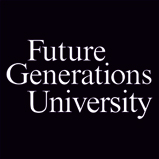| Artisan gallery in Jacmel |
Jacmel is a sleepy seaside town on Haiti’s southern coast. In 1925, it became the first city in the Carribean with electricity and it has been a bright place ever since. It has some of the best preserved French colonial architecture, its meandering brick streets are lined with colorful buildings, and its numerous artisans sell handmade jewelry, painted kalbas, ironwork, and other items. Instead of competing for tourist dollars, twenty-seven of these artisans came together in 2009 to form G27. G27 (with many more than twenty-seven members today) is a collective that shares gallery space, advocates for Jacmel’s thriving arts scene, and collaborates on larger projects. As individuals, they are talented artisans. As a group, they are a powerful voice.
G27 is one of over seventy successful community initiatives included on Wozo Ayiti, a success map created by Future Generations Haiti. Wozo Ayiti (from “wozo,” a reed that symbolizes the resilience of the Haitian people, and “Ayiti,” the Haitian Creole spelling of “Haiti) is an effort to map and document the stories of Haiti’s communities and their achievements. It is based on the Positive Deviance (PD) approach. Rather than focus on the needs of a community, PD hones in on the diversity of strategies within a community to cope with common challenges.
Two years after the earthquake in 2010, Future Generations Haiti set out to find examples of Haitians’ ability to overcome devastation and improve their own living conditions. While there was a great deal of foreign aid coming into the country, there was little attention being paid to the ways that Haitians were mobilizing themselves. Staff members consulted community leaders and organized focus groups. They put together a list of fundamental characteristics of successful community-led initiatives. Then, the team traveled the country to find and map initiatives that shared these characteristics. At each site, the local practitioners would recommend another for the team to visit. The project snowballed all across the small Caribbean nation.
 |
|
| Moringa tree seedlings |
There is the Association of Valliant Women of Anse a Pitre (AFVA) that protects and empowers victims of domestic violence by teaching them revenue generating skills such as sewing and artisanwork. In the Port-au-Prince community of Bwa Nef, RAJEPRE is an organization that runs a community school to teach children about the importance of environmental protection and neighborhood pride. In the northern community of Limonade, residents have rallied around Basin Mambo. Basin Mambo (Mambo Lake) is a culturally significant tourist draw. The local residents volunteer by reforesting the ground around the basin, maintaining walls and canals, and providing horses and guides for visitors. Haiti is full of stories like this, of community members coming together and drawing on local assets.
Wozo Ayiti uses OpenStreetMap, an open source mapping program that was developed to bypass the restrictions on and limited availability of geographic information in many parts of the world. Future Generations students are trained in the program as part of the MA in Applied Community Change program. They use it to map assets and successes in their own communities, all over the world.
To learn more about success mapping, read Success Mapping: A Brief Guide, available at past.future.edu.

